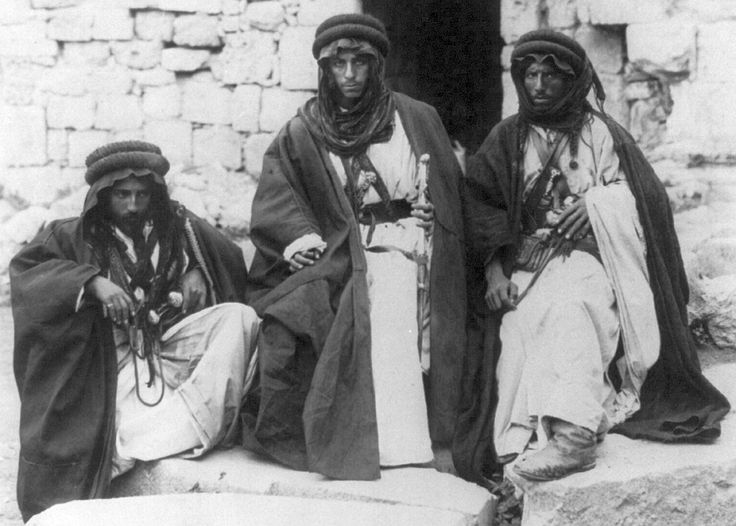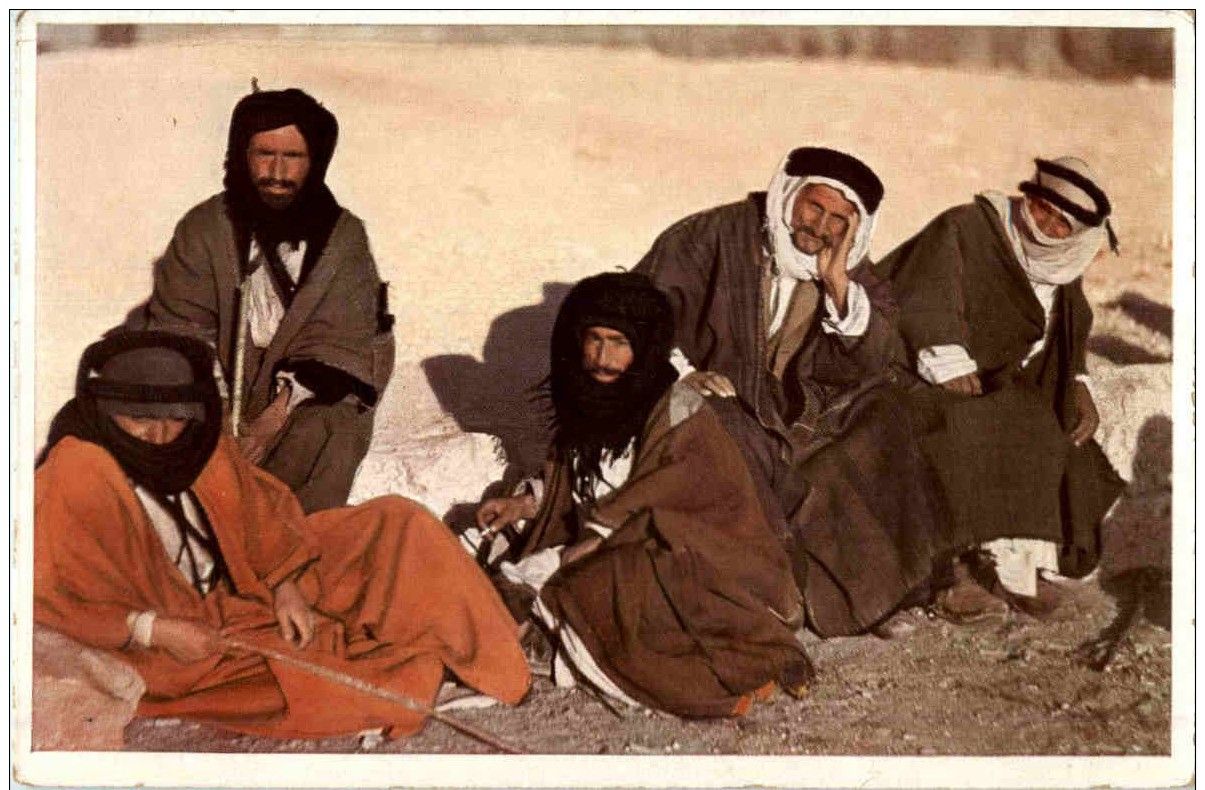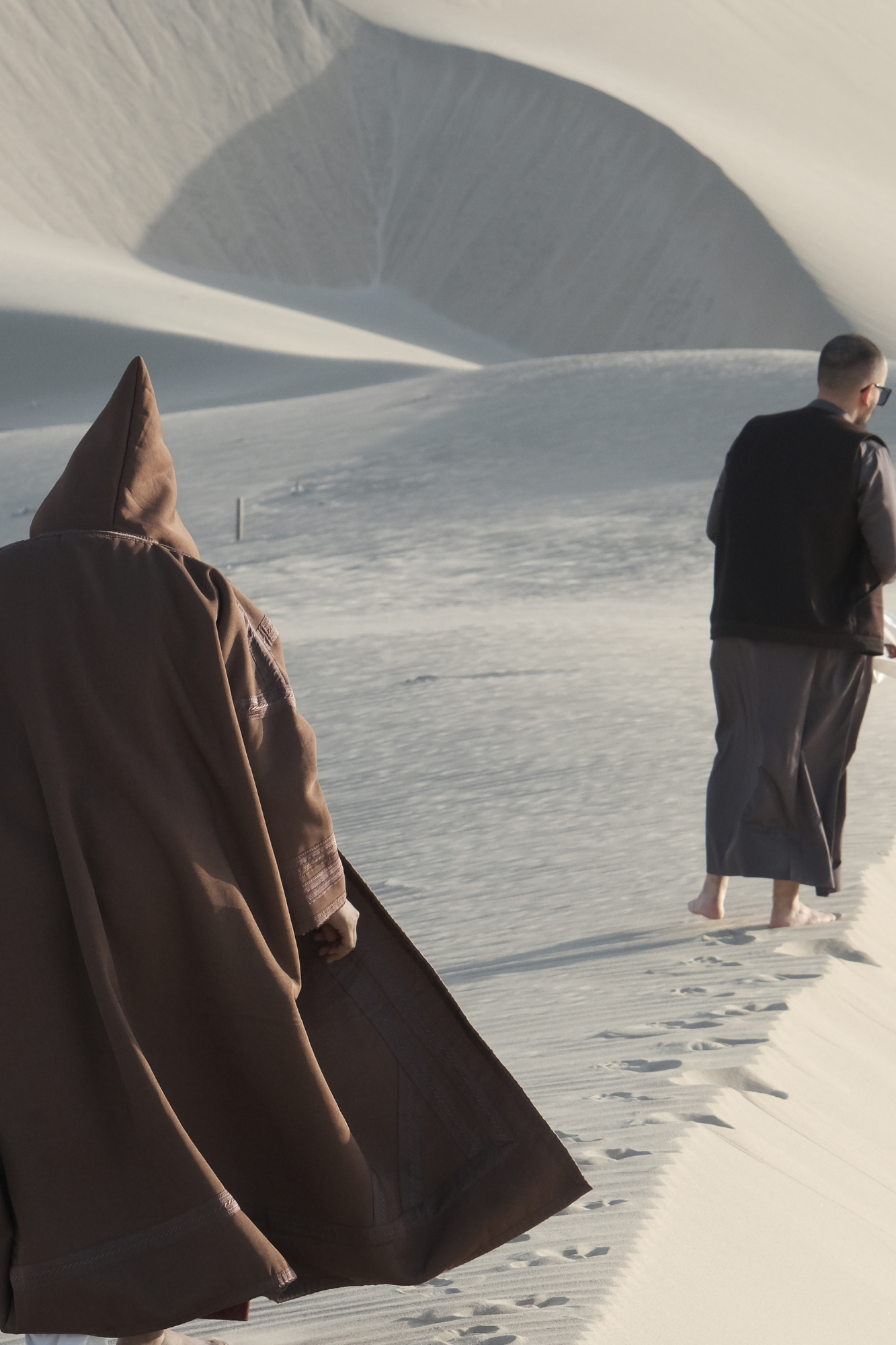
The Origin
It all started when two expatriates living in Qatar fell in love with the nomadic lifestyle of the locals who were living deep within the harsh desert terrain utilising traditional Syrian garments.
The two friends envisioned a fusion between their own urban UK culture and this ancient way of life that is so different from anything they had experirenced before, whilst still managing to be uniquely appealing due to its simplicity. The vision for the company developed when these travelers saw an opportunity to combine and brew two opposite lifestyles to create something special and thus The Kiswa Company was born.
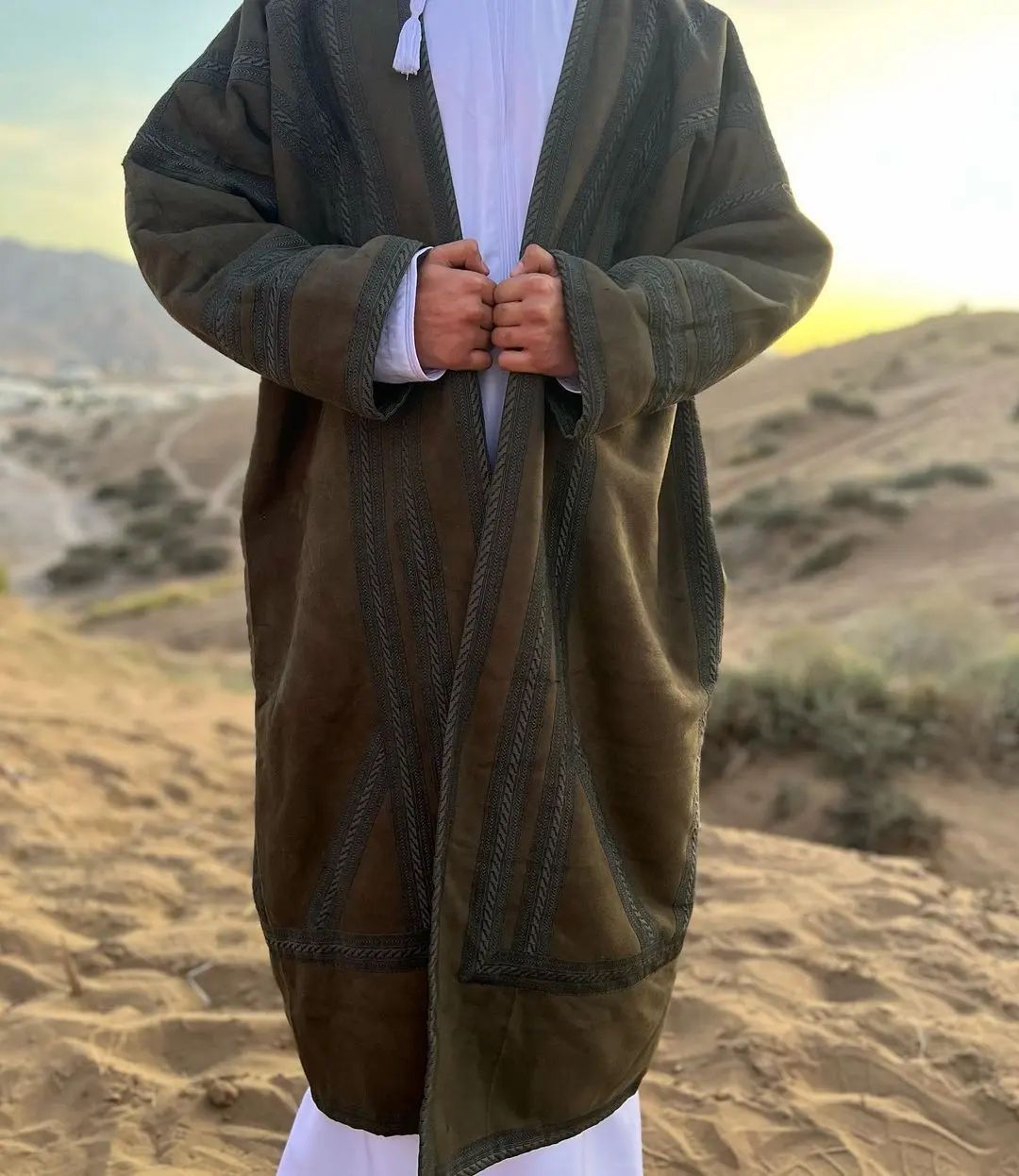
Al-Farwa (فروة)
Farwas are believed to have originated from Syria and Levant where Bedouins would wear them during the cold winter months.
The long, sweeping, fur-lined overcoat has now established a firm foothold in countries all over the Gulf.
It is a staple in many Saudi households, particularly in the northern and central regions where the biting desert cold can reach surprisingly low temperatures.
All of our farwas coats are cut on the traditional square or box model as is most bedouin clothing. It is a square of cloth with added rectangular sleeves and gussets. Special attention is given to the cut and fold of the cloth as well as to adding the trim in the correct geometrical design. The original version worn by men & women, is a cotton shell covered with a contrasting trim in a geometrical design and lined with sheep fur, sometimes rabbit. This later gave way to the most popular and heaviest version of the coat with a wool exterior, embroidered trim on the neckline, often with small tassels and a plush synthetic lining. Our practical variation has a faux suede exterior with trim with a synthetic fur lining. Our products are made in Syria and sourced in Qatar.
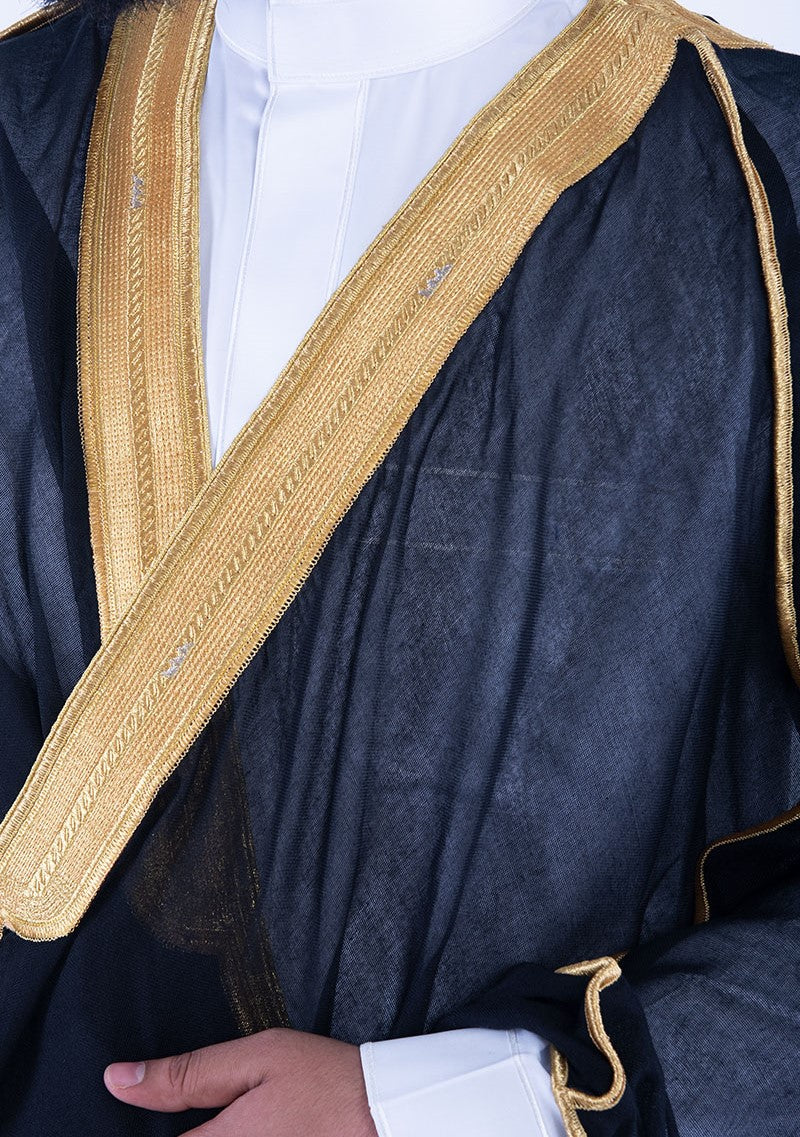
Bisht بِشْت
A bisht (Arabic: بِشْت; plural: بِشُوت bishūt and بْشُوت bshūt), also known in some Arabic dialects as mishlaḥ (Arabic: مِشْلَح) or ʿabāʾ (Arabic: عَبَاء), is a traditional men's cloak that has been popular in the Arab world for thousands of years. Worn for its prestige, the bisht is often seen at special occasions such as weddings, festivals like Eid, or during Ṣalāt al-Jumuʿah and Salat al-Janazah. It is typically donned by secular officials, clergy, tribal chiefs, kings, and imams over a thawb, kanzu, or tunic. The bisht is a status symbol, associated with royalty, religious authority, wealth, and significant ceremonial events, much like the black-tie tuxedo in the West.

